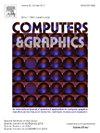FCAT-Diff: Flexible and Consistent Appearance Transfer Based on Training-free Diffusion Model
IF 2.8
4区 计算机科学
Q2 COMPUTER SCIENCE, SOFTWARE ENGINEERING
引用次数: 0
Abstract
The core goal of appearance transfer is to seamlessly integrate the appearance of a reference image into a content image. However, existing methods operate on the entire image and fail to accurately identify the regions of interest for appearance transfer, leading to structural loss and incorrect background transfer. Additionally, these methods lack flexibility, making it difficult to achieve fine-grained control at the regional level. To address these issues, we propose FCAT-Diff, a training-free framework for flexible and consistent appearance transfer without additional training or fine-tuning. Specifically, to achieve more consistent appearance transfer, we employ a dual-guidance branch to provide structure and appearance features, which are fused through an enhanced self-attention module called Mask-Appearance-Attention (MAA). The MAA clearly distinguishes the boundaries between the background and the transferred region, ensuring consistency in both the structure and background. To increase the flexibility of transfer, we utilize a mask that allows users to select the regions of interest for transfer, enabling appearance transfer for specified regions. Furthermore, given multiple reference images and their corresponding regions, our FCAT-Diff supports the transfer of multiple appearances. Extensive experiments demonstrate that our method achieves state-of-the-art (SOTA) performance in maintaining the structural and background consistency of the content image while providing greater flexibility.

FCAT-Diff:基于无训练扩散模型的灵活一致外观迁移
外观转移的核心目标是将参考图像的外观无缝地集成到内容图像中。然而,现有的方法对整个图像进行操作,不能准确地识别出感兴趣的区域进行外观转移,导致结构丢失和背景转移错误。此外,这些方法缺乏灵活性,因此难以在区域级别实现细粒度控制。为了解决这些问题,我们提出了FCAT-Diff,这是一个无需培训的框架,可以灵活一致地进行外观转移,无需额外的培训或微调。具体来说,为了实现更一致的外观转移,我们采用双引导分支来提供结构和外观特征,并通过称为Mask-Appearance-Attention (MAA)的增强自注意模块将其融合。MAA清晰地区分了背景和转移区域的边界,保证了结构和背景的一致性。为了增加传输的灵活性,我们利用掩码,允许用户选择感兴趣的区域进行传输,从而实现指定区域的外观传输。此外,在给定多个参考图像及其对应区域的情况下,我们的FCAT-Diff支持多种外观的转移。大量的实验表明,我们的方法在保持内容图像的结构和背景一致性方面达到了最先进的(SOTA)性能,同时提供了更大的灵活性。
本文章由计算机程序翻译,如有差异,请以英文原文为准。
求助全文
约1分钟内获得全文
求助全文
来源期刊

Computers & Graphics-Uk
工程技术-计算机:软件工程
CiteScore
5.30
自引率
12.00%
发文量
173
审稿时长
38 days
期刊介绍:
Computers & Graphics is dedicated to disseminate information on research and applications of computer graphics (CG) techniques. The journal encourages articles on:
1. Research and applications of interactive computer graphics. We are particularly interested in novel interaction techniques and applications of CG to problem domains.
2. State-of-the-art papers on late-breaking, cutting-edge research on CG.
3. Information on innovative uses of graphics principles and technologies.
4. Tutorial papers on both teaching CG principles and innovative uses of CG in education.
 求助内容:
求助内容: 应助结果提醒方式:
应助结果提醒方式:


